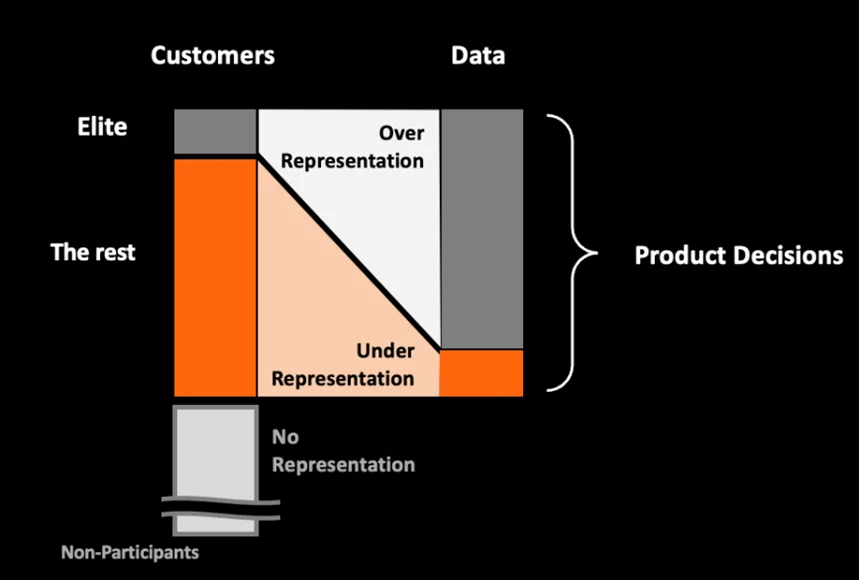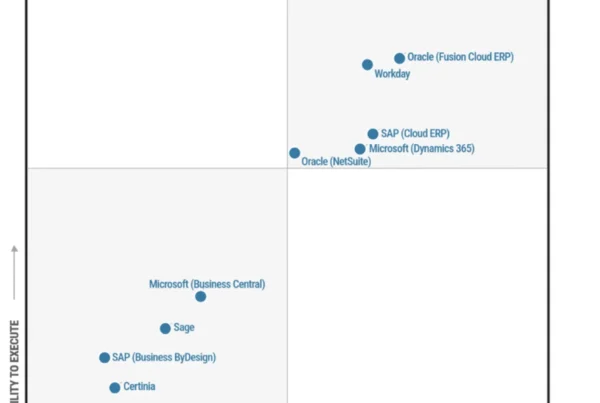As marketing leaders, one could say that your potential for success is only as good as the data you possess. But is that possession enough? To develop targeted, thoughtful, and inclusive customer experiences, acknowledging that today’s data lacks representation, diversity, and reach is important. That’s true whether you consider gender, race, age, cultural experiences, accessibility, and more.
In today’s data-driven business landscape, it’s important to reflect on the fact that the traditional data sets you’ve come to rely upon only provide part of the answer. To get to the heart of your customers’ decision-making, you need to not only consider data that’s inclusive and representative of the customers you are trying to reach, but also take a fresh look at how you measure this data.
The industry is at an inflection point. Inclusive analytics are where the opportunity for marketing leaders lie—not only in terms of building a better, higher-performing business, but also in contributing to building trust and advocacy with your customers.
Marketing with Purpose
Purpose is as important now as ever for how brands engage with people.


Taking a holistic, inclusive perspective
Customers are more likely to trust, buy from, and champion companies that have or embrace a strong purpose. And we’re not talking just any purpose, but an action-driven one that helps define the business.
That’s largely because the emotional connection and association a person feels toward a brand is informed by their perception of that brand’s reputation, values, responsible business practices, and inclusivity.
“Corporate reputation management hinges on not only a brand’s emotional appeal, but also how it lives, breathes, and behaves in the market. When we add diversity into the equation, we see a heightened need for understanding and integrating the unique wants, needs, and perspectives of differing and evolving audiences.”
Walter Geer, Chief Experience Design Officer, VMLY&R
The “aha” moment, of course, comes down to how inclusivity is defined and an inclusive customer decision journey. We’re talking about a journey that is personalized to the point of being able to make people feel welcomed and included, where they say, “You get me; you’re a brand for someone like me.”1
Take, for example, one dimension of diversity—gender—and a story shared by a Microsoft engineer who was in the room as this example unfolded. Several years ago, a new program manager joined the product team. During a planning meeting with several engineers, she brought up the idea that a welcome screen that the team was designing wasn’t particularly welcoming and felt cold and impersonal. As an alternative, she proposed a white background with a colorful, creative flair.

Chewy Chong, Principal of Co-Innovation at Microsoft, said, “Why don’t we test it?” And they did, conducting a small test of the prototype on 500 users. The topline data showed 40 percent increased engagement by women, but men had a 39 percent decrease in engagement. When viewed as an aggregate, these two groups zeroed each other out. Women preferred the designed version, while men equally preferred the blue version.
Moving past bias
The insight prompted curiosity and self-reflection by the team but ultimately, they chose not to make a change given the preference of the primary audience. This introduced bias into the sampling or testing by valuing one cohort over others. Businesses often optimize design for the primary audience, which leaves out the opportunity for inclusion of the needs of other customers.
What’s even more interesting is that in the welcome screen test, the team found that the user research panel was overweight in one main demographic. This speaks to the need to really understand the makeup of data sources and research panels, and how a business may be affected by bias potential, preventing that business from leaning into a more inclusive customer decision journey—and preventing the business from growing.

The impact of this reaches beyond just excluding an audience. Overrepresentation of one group and underrepresentation of another can also impact how a company chooses to design and evolve its product(s) and marketing strategy. This is especially true in the technology vertical, where the need and stakes are higher in creating a more equitable future. Some, like Nadia Masri, Founder and CEO of Persky, a next-generation consumer insights platform, view it as not just a need, but an obligation.
“I think every startup and every technology company has an obligation to figure out ways to make a more just and equitable future that is driven by technology. If we’re leading innovation, we have to make sure that that innovation results in fairness and equality for all people—all genders, all colors, all abilities, etc., so that everyone can be included in the future that we are building.”
Nadia Masri, Founder and CEO, Persky
Looking at exclusion to find inclusion
When you think about inclusion, companies must do more than “talk the talk” without actually learning anything. This comes from trying to optimize for the average customer but resonating with no one. The real opportunity here is to start looking at the customer not accounted for. That means diving into how that customer base is excluded, then solving that issue to grow it and create a more emotional connection.
When you have proximity with the vast diversity of human experience, proximity leads to empathy and empathy leads to insight, which allows you to close the gap between customers who are included and the people who are excluded. When you capture the heart and intention of an audience and build an authentic relationship on shared values and an understanding of their lived experience, it’s much easier to deliver on the conversion-related conversations, such as price and financing.
Take, for example, the decision journey for a new car. At Microsoft Advertising, we used our automotive analytics insights team to help understand how people decide what brand to select, type of car, price, and so on. Historically, it’s well understood that people start their buying process 26 weeks before they make a purchase decision. So, we started looking at the data at that point and then parsed the query path, analyzing more than 500,000 people’s searches over that time.
We initially looked again at gender as a dimension of diversity, discovering what women value versus men. As expected, we saw differences in what women valued during the customer decision journey compared to men at each stage in the process.
But we also did something unexpected. The team realized we had 52 weeks of data we could explore, well beyond the established 26 weeks. What we found were keywords about accessibility. People with disabilities were looking for brands that had great technology and were investing in the best type of robotics and other key attributes related to adaptive cars. Ultimately, we discovered that this audience made a brand decision 52 weeks out before disappearing from the direct query path, likely heading down a query path on financials and returning at 26 weeks.
We found these insights by being open-minded and striving to root out bias toward a long-established “fact” that the automotive customer journey starts at 26 weeks before purchase. A more inclusive customer journey is one that considers all audiences and seeks to understand their journeys from their points of view. By looking at the data 52 weeks out, we discovered that we needed to reexamine our assumptions about how we treat prepurchase data to identify new human intent signals.
Nothing about us, without us
Creating more diversity in customer experience and evaluation of the data that informs it starts from within. The meaning of “nothing about us, without us” is simple yet powerful. If you’re designing for people with disabilities, why not try designing with people with disabilities? It becomes a two-dimensional consideration.
First, ensuring more inclusive customer decision journeys requires including the diverse customer base you are trying to reach. It’s about understanding their purchase journey through their experience. That means conducting more qualitative than quantitative research to:
- Learn everything from the terminology the customer uses to the way to show and describe your product and how to integrate that into your advertising.
- Participate in ongoing conversations with your diverse customer base and explore every facet of their purchase journey, like how they find out about your product and packaging experiences, which is critical to ensure you serve all the needs of your diverse audience and not leave any aspect out.
Second, a diverse workforce is also essential in helping create more diversity of thought that reflects your customers’ wants and needs. A plurality of perspectives that includes diversity in gender, age, race, work experience, abilities, cultural background, and more is critical.
A diverse internal team is more likely to have the information needed to provide an empathetic, authentic, and inclusive customer experience. In other words, diverse talent can translate into improved understanding, new markets, and expanded customer bases.
The desire for teams with diversity should extend across the company at large through a supported inclusive environment.
Your company’s potential for innovation, growth, and development ties directly to your employees’ knowledge base. And clearly, a more informed, authentic, and inclusive knowledge base—based on inclusive analytics and lived experience by the breadth of the humanity—is what is needed for the best collective future.
Next steps
Learn more about leveraging data across your organization to create more personalized and relevant customer experiences.
End Notes
1Marketing with Purpose Playbook, Microsoft Advertising, September 2020.






